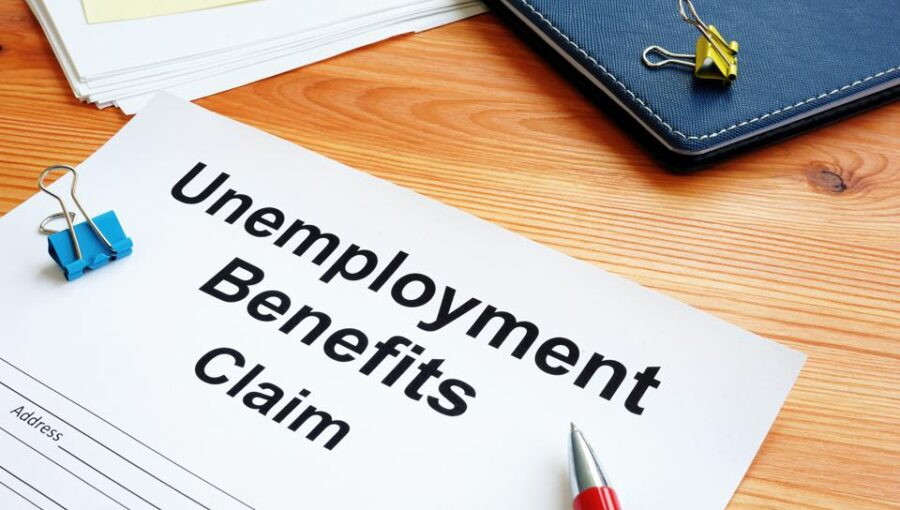Description

Copyright infringement is not intended
Context: A study taken in the United States to understand whether the benefits given during the pandemic delaying people from taking steady employment.
Details:
- Unemployment benefits (Insurance, Payment, Compensation) are payments made by the government, organization, or any authorized bodies to unemployed people.
- Unemployment benefits are seen as absolutely necessary to help people who lost their jobs during the coronavirus pandemic.
- The Federal Pandemic Unemployment Compensation (FPUC) and the Pandemic Unemployment Assistance (PUA) were two US Government programs that were used to extend unemployment benefits in the United States as part of the Coronavirus Aid, Relief, and Economic Security (CARES) Act of March 2020.
Unemployment Scenario in India:
- Report published by the Center for Monitoring Indian Economy (CMIE), shows that India’s unemployment rate touched 7.9% in December 2021.
- According to the report published by Center for Monitoring Indian Economy, India has 53 million unemployed people as of December 2021 and a huge proportion of them are women.
- Among these 53 million unemployed, 35 million are the unemployed who are actively seeking work while 17 million are those who are willing to work, but not actively seeking it.
Steps taken by the government in this regard:
- Mahatma Gandhi National Rural Employment Guarantee Act was launched in 2005 to provide social security by guaranteeing a minimum of 100 days paid work per year.
- The National Skill Development Mission was started in 2014 to promote ‘Skill India’ to converge the existing skill training initiatives.
- Pradhan Mantri Kaushal Vikas Yojana was launched in 2015, to enable the youth to take up industry-relevant skill training.
- The Stand Up India Scheme was launched in 2016, to facilitate bank loans to women and SC/ST borrowers between Rs 10 lakh and Rs. 1 crore to establish enterprises.
- The Make in India programme was started with the objective to develop India into a manufacturing hub and generate employment in the country.
- The PM Gati Shakti scheme was announced in the latest budget with the aim to promote infrastructure development in India and generate employment.
Unemployment benefits in India:
- In India, Unemployment allowance is given to workers who have contributed to the Employees' State Insurance for at least three years. The benefit is given for a maximum of one year and is either 50% of the average daily wage or Rs 35,000 a month, whichever is lower.
- Government started a scheme named ‘Atal Beemit Vyakti Kalyan Yojna’ to provide an allowance to the unemployed.
- Apart from the union government, many states also run several programs for providing benefits to the unemployed.
Argument in favor of Unemployment Benefits:
- In a democracy people expect the government to work for their welfare. Therefore it is the Constitutional and moral duty of the government to help their citizens during the period of hardship.
- Unemployment benefit programs protect workers against major income losses during the period of unemployment. By Supporting unemployed workers to meet basic consumption needs, the programs protect workers from selling their assets.
- Assurance of getting minimum income or benefits during the period of crisis, anti-social activities could be curbed, as the population without any means to fulfill basic needs could easily get involved in illegal activities which could result in an increase in crime.
- It also help to curb problems like child labour, school drop out, Child marriage, Prostitution, etc as they are related to poor socio-economic condition.
- It protects people from falling into poverty, by ensuring minimum support from the government.
- The programs also help in stabilizing the economy during recessions.
Argument against Unemployment Benefits:
- Unemployment benefits increase unemployment by discouraging people from looking for work.
- When a certain amount of money keeps coming in pocket without any work, then the incentive for the unemployed to look for a new job would decline.
- This results in an increase in the tax burden on society that must fund these benefits, and also affects the economic development of the country.
- Overall economic output of society declines as the size of the economy’s working population shrinks.
Way Forward:
- The major problem right now is low consumption demand due to decline in income, and businesses cannot sell their goods, which means that they have no reason to hire. The less consumer demand, results in less job generation. And the less job generation, results in less demand.
- Government tries to increase spending, by providing unemployment benefits to those who have experienced a decline in income and are not able to generate demand on their own. By doing this the government creates demand in the economy, which in turn expands business and creates new jobs.
- Unemployment benefit programs play an important role in the economy by protecting workers’ incomes, improving their standard of living, and supporting the economy during recessions.
- Unemployment benefit Policies need to strike a balance between the positive effects of unemployment benefit programs and their negative side effect The policy challenge is to protect workers while minimizing undesirable side effects.
https://www.washingtonpost.com/outlook/2021/05/13/unemployment-benefits-minimum-wage-work/








